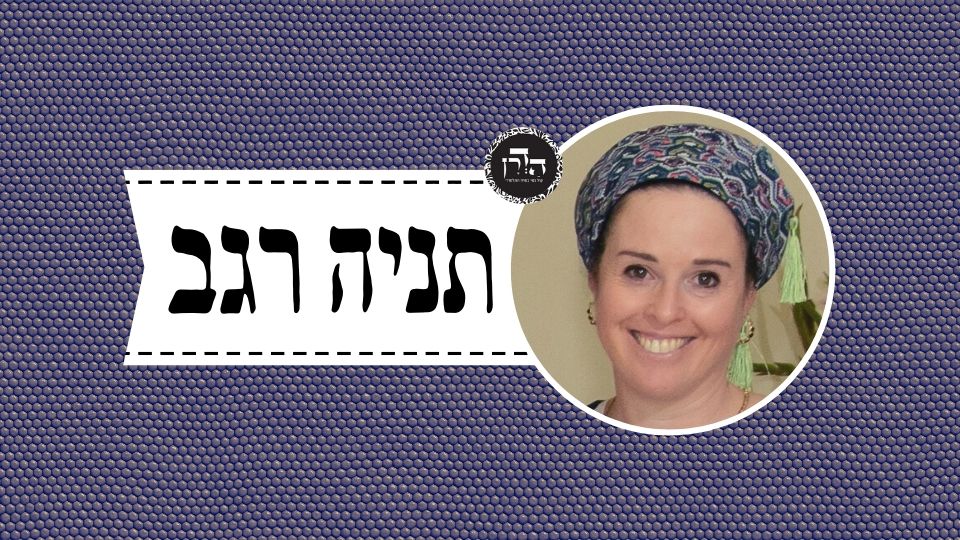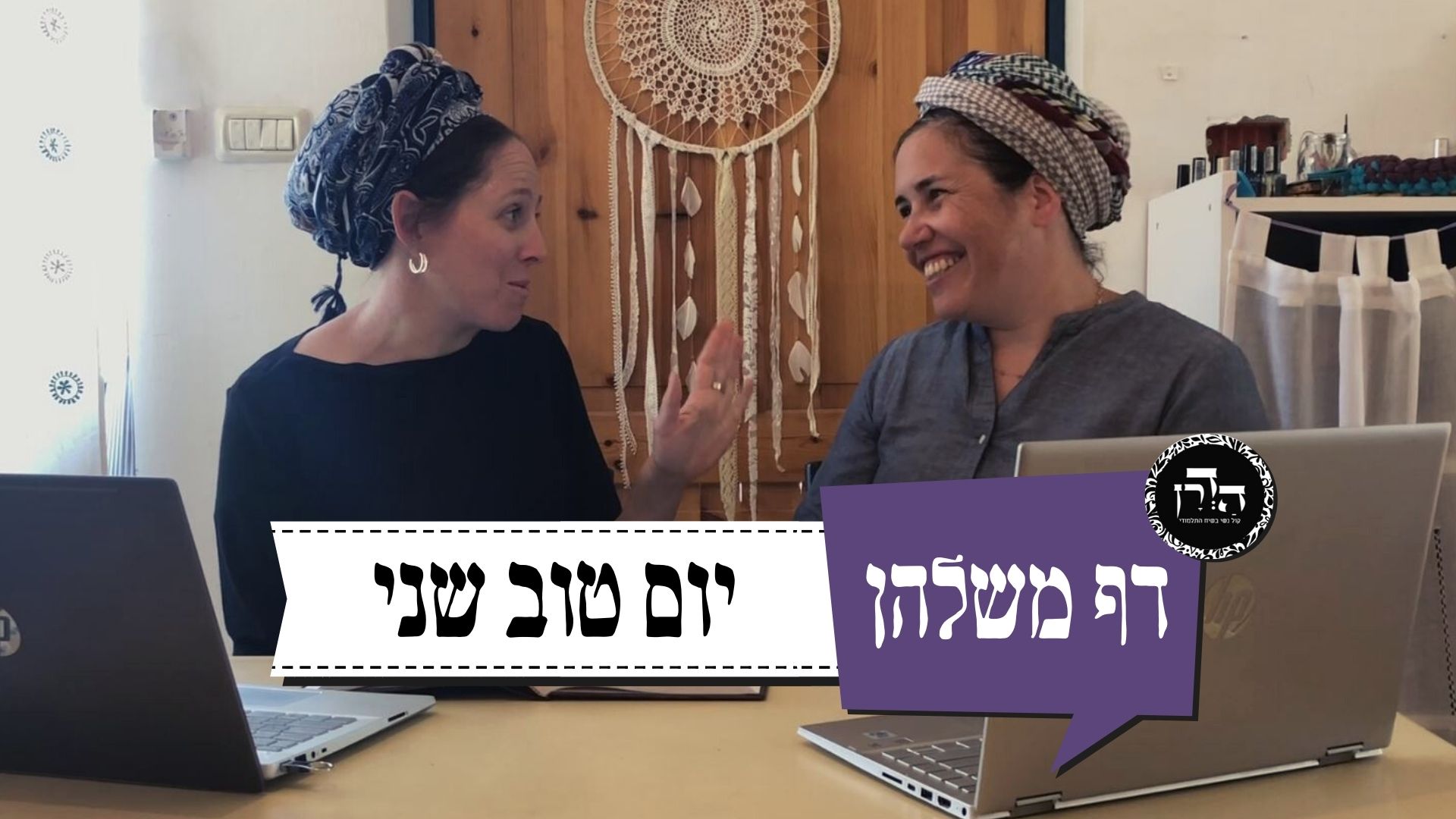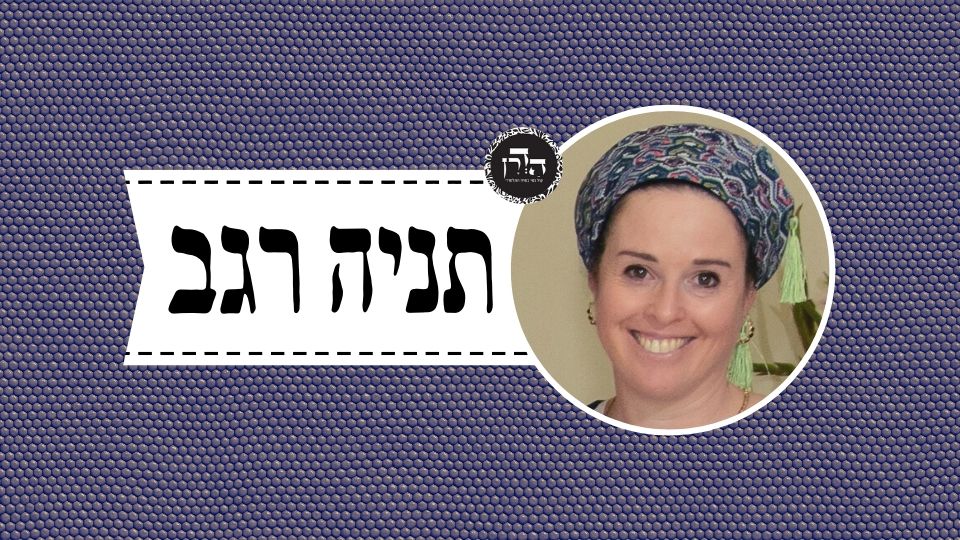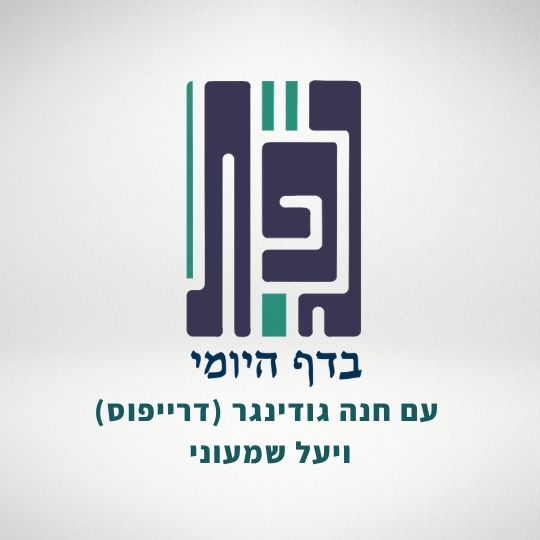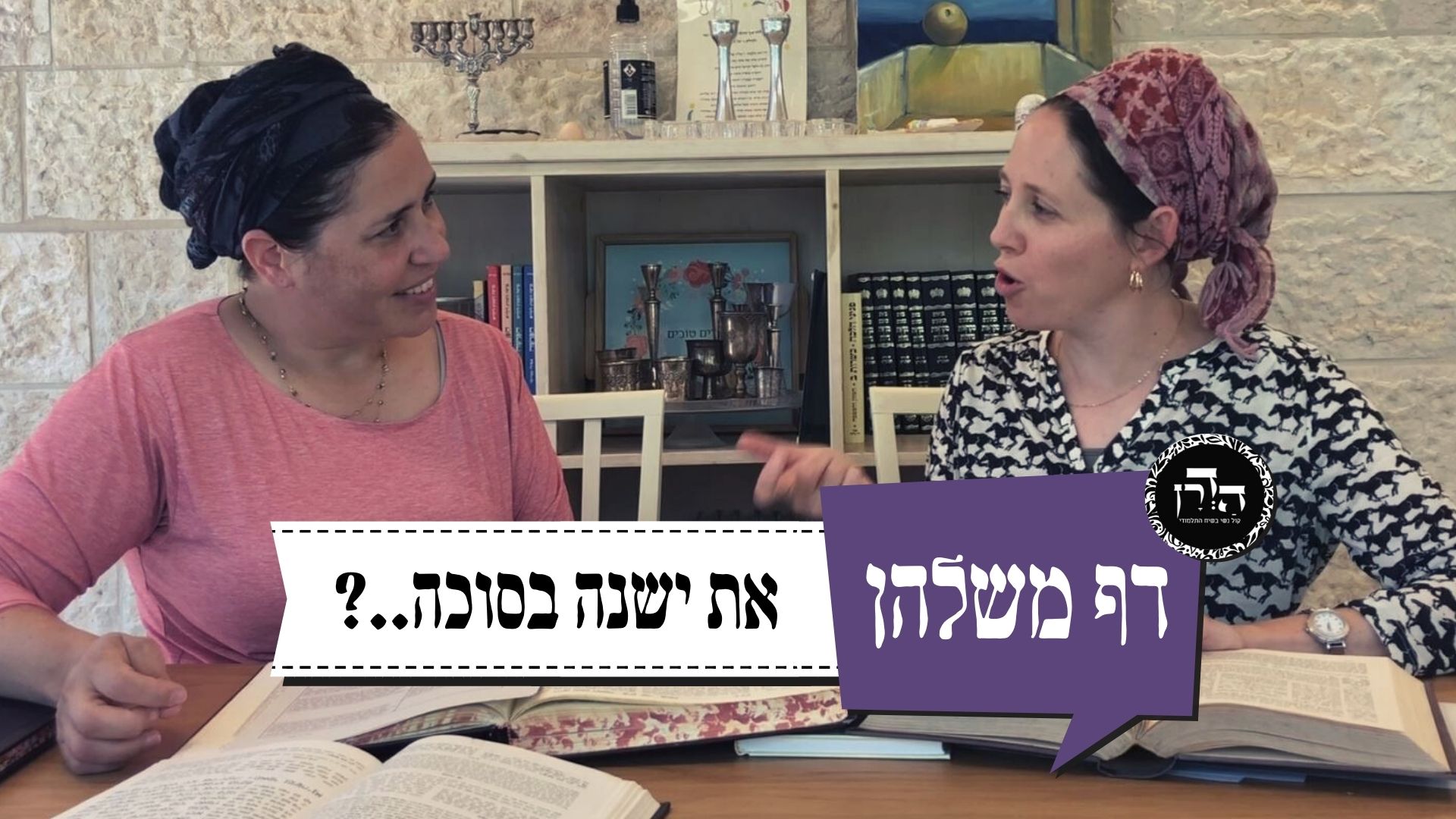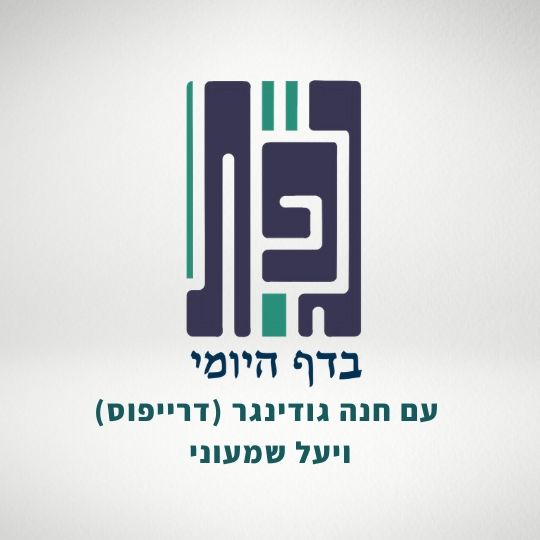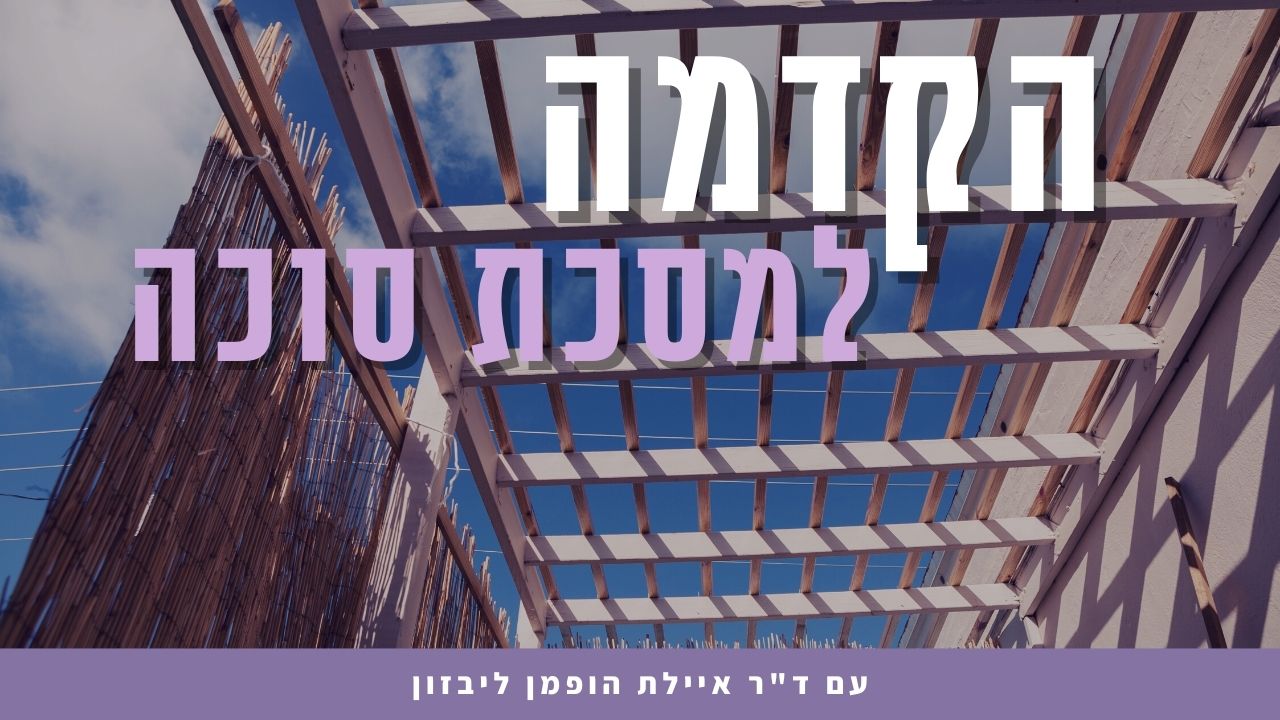סוכה כ
וְהָכִי קָאָמַר: מַחְצֶלֶת הַקָּנִים גְּדוֹלָה, עֲשָׂאָהּ לִשְׁכִיבָה — מְקַבֶּלֶת טוּמְאָה, וְאֵין מְסַכְּכִין בָּהּ. טַעְמָא דַּעֲשָׂאָהּ לִשְׁכִיבָה, הָא סְתָמָא — נַעֲשָׂה כְּמִי שֶׁעֲשָׂאָהּ לְסִיכּוּךְ, מְסַכְּכִין בָּהּ. (קְטַנָּה, עֲשָׂאָהּ לְסִיכּוּךְ — מְסַכְּכִין בָּהּ. טַעְמָא דַּעֲשָׂאָהּ לְסִיכּוּךְ, הָא סְתָמָא — נַעֲשָׂה כְּמִי שֶׁעֲשָׂאָהּ לִשְׁכִיבָה, וְאֵין מְסַכְּכִין בָּהּ). וַאֲתָא רַבִּי אֱלִיעֶזֶר לְמֵימַר: אַחַת קְטַנָּה וְאַחַת גְּדוֹלָה, סְתָמָא — כְּשֵׁרָה לְסִיכּוּךְ.
And this is what the mishna is saying: With regard to a large mat of reeds, if one produced it for the purpose of lying upon it, it is susceptible to ritual impurity, and one may not roof a sukka with it. The reason is that one produced it specifically for the purpose of lying upon it; however, by inference, a mat that one produced without designation becomes as a mat produced for roofing, and one may roof a sukka with it. With regard to a small mat of reeds, if one produced it for roofing, one may roof a sukka with it. The reason is that one produced it specifically for roofing; however, by inference, a mat that one produced without designation becomes as a mat produced for the purpose of lying upon it, and one may not roof a sukka with it. And Rabbi Eliezer comes to say that both a small mat and a large one produced without designation are fit for roofing.
אֲמַר לֵיהּ אַבָּיֵי: אִי הָכִי, רַבִּי אֱלִיעֶזֶר אוֹמֵר: אַחַת קְטַנָּה וְאַחַת גְּדוֹלָה, ״אַחַת גְּדוֹלָה וְאַחַת קְטַנָּה״ מִיבְּעֵי לֵיהּ!
Abaye said to him: If so, if their dispute is only with regard to a small mat, then instead of saying: Rabbi Eliezer says: Both a small mat and a large mat, the mishna needed to say: Both a large mat and a small mat. In a phrase with the format: Both this and that, one typically mentions the more obvious item first. Why then, does Rabbi Eliezer mention the small mat first, if it is with regard to the small mat that they disagree?
וְעוֹד: כִּי פְּלִיגִי, בִּגְדוֹלָה הוּא דִּפְלִיגִי — וְרַבִּי אֱלִיעֶזֶר לְחוּמְרָא. דְּתַנְיָא: מַחְצֶלֶת הַקָּנִים גְּדוֹלָה מְסַכְּכִין בָּהּ. רַבִּי אֱלִיעֶזֶר אוֹמֵר: אִם אֵינָהּ מְקַבֶּלֶת טוּמְאָה — מְסַכְּכִין בָּהּ.
And furthermore, there is proof that when they disagree, it is with regard to a large mat, and Rabbi Eliezer’s opinion is a stringency and not a leniency, as it is taught in a baraita: In the case of a reed mat, with a large mat one may roof a sukka. Rabbi Eliezer says: If it is not susceptible to ritual impurity, one may roof his sukka with it. Apparently, Rabbi Eliezer holds that without designation, one may not roof his sukka with a large mat.
אֶלָּא אָמַר רַב פָּפָּא: בִּקְטַנָּה כּוּלֵּי עָלְמָא לָא פְּלִיגִי דִּסְתָמָא לִשְׁכִיבָה. כִּי פְּלִיגִי בִּגְדוֹלָה, תַּנָּא קַמָּא סָבַר: סְתַם גְּדוֹלָה לְסִיכּוּךְ, וְרַבִּי אֱלִיעֶזֶר סָבַר: סְתַם גְּדוֹלָה נָמֵי לִשְׁכִיבָה.
Rather, Rav Pappa said: Rava’s proposed resolution is rejected. Rather, with regard to a small mat, everyone agrees that if it was produced without designation, presumably it is for the purpose of lying upon it. When they disagree, is with regard to a large mat: The first tanna holds that a large mat produced without designation is presumably for roofing, and Rabbi Eliezer holds that a large mat produced without designation is also presumably for the purpose of lying upon it.
וּמַאי עֲשָׂאָהּ לִשְׁכִיבָה דְּקָאָמַר — הָכִי קָאָמַר: סְתַם עֲשִׂיָּיתָהּ נָמֵי לִשְׁכִיבָה, עַד דְּעָבֵיד לְסִיכּוּךְ.
What, then, is the meaning of: If one produced it for the purpose of lying upon it, that Rabbi Eliezer states? This is what he is saying: Making mats without designation is also for the purpose of lying upon it, until one makes it specifically for roofing.
תָּנוּ רַבָּנַן: מַחְצֶלֶת שֶׁל שִׁיפָה וְשֶׁל גֶּמִי, גְּדוֹלָה — מְסַכְּכִין בָּהּ, קְטַנָּה — אֵין מְסַכְּכִין בָּהּ. שֶׁל קָנִים וְשֶׁל חִילָת, גְּדוֹלָה — מְסַכְּכִין בָּהּ, אֲרוּגָה — אֵין מְסַכְּכִין בָּהּ.
§ The Sages taught in the Tosefta: In the case of a mat [maḥatzelet] woven of papyrus or bulrushes, if it is a large mat, one may roof a sukka with it, as it is not typically produced for the purpose of lying upon it. If it is a small mat, one may not roof a sukka with it, as it is typically produced for the purpose of lying upon it. However, with regard to a mat produced of ordinary reeds or reeds specifically used for plaiting, if the mat is plaited with a large, coarse weave, one may roof a sukka with it, as it was certainly not produced for the purpose of lying upon it. If it is woven with a small, fine weave, one may not roof the sukka with it, as typically mats of this sort are woven only for the purpose of lying upon them.
רַבִּי יִשְׁמָעֵאל בְּרַבִּי יוֹסֵי אוֹמֵר מִשּׁוּם אָבִיו: אַחַת זוֹ וְאַחַת זוֹ מְסַכְּכִין בָּהּ. וְכֵן הָיָה רַבִּי דּוֹסָא אוֹמֵר כִּדְבָרָיו.
Rabbi Yishmael, son of Rabbi Yosei, said in the name of his father: Both with this plaited mat and with that woven mat, one may roof a sukka, as without specific designation otherwise they are not produced for the purpose of lying upon them, and therefore they are ritually pure. And likewise, Rabbi Dosa would say in accordance with his statement.
תְּנַן הָתָם: כׇּל הַחוֹצָלוֹת מְטַמְּאִין טְמֵא מֵת, דִּבְרֵי רַבִּי דּוֹסָא. וַחֲכָמִים אוֹמְרִים: מִדְרָס.
We learned in a mishna there: All types of ḥotzalot can become ritually impure with impurity imparted by a corpse. Since their legal status is that of a vessel, they become a primary source of ritual impurity. This is the statement of Rabbi Dosa. And the Rabbis say: They become impure with the impurity imparted by treading. If a zav lies or sits on one of the ḥotzalot, they become a primary source of ritual impurity, like a chair or bed of a zav.
מִדְרָס אִין, טְמֵא מֵת לָא? וְהָא אֲנַן תְּנַן: כׇּל הַמִּטַּמֵּא מִדְרָס — מִטַּמֵּא טְמֵא מֵת. אֵימָא: אַף מִדְרָס.
The Gemara asks: Impurity imparted by treading, yes; impurity imparted by a corpse, no? But didn’t we learn in a mishna: Any item that becomes ritually impure with impurity imparted by treading also becomes ritually impure with other types of impurity, including impurity imparted by a corpse, although the reverse is not necessarily so. The opinion of the Rabbis is difficult. The Gemara explains: Emend the mishna and say: They become ritually impure even with the impurity imparted by treading. These mats are not merely nondescript vessels, which become primary sources of ritual impurity through exposure to a corpse, they are vessels designated for sitting and lying upon them, and therefore they also become primary sources of ritual impurity if a zav sits or lies upon them.
מַאי חוֹצָלוֹת? אָמַר רַב אַבְדִּימִי בַּר הַמְדּוּרֵי: מַרְזוֹבְלֵי. מַאי מַרְזוֹבְלֵי? אָמַר רַבִּי אַבָּא: מַזְבְּלֵי. רַבִּי שִׁמְעוֹן בֶּן לָקִישׁ אוֹמֵר: מַחְצָלוֹת מַמָּשׁ.
The Gemara asks about the term used in the mishna: What is the meaning of ḥotzalot? Rav Avdimi bar Hamduri said: They are marzovelei. The Gemara is unfamiliar with the term and asks: What is the meaning of marzovelei? Rabbi Abba said: They are called mezablei in Babylonia. They are leather sacks used by shepherds to feed their animals. Shepherds place them under their heads when lying down. Rabbi Shimon ben Lakish says: Ḥotzalot are a different term for actual mats.
וְאַזְדָּא רֵישׁ לָקִישׁ לְטַעְמֵיהּ. דְּאָמַר רֵישׁ לָקִישׁ: הֲרֵינִי כַּפָּרַת רַבִּי חִיָּיא וּבָנָיו, שֶׁבִּתְחִלָּה כְּשֶׁנִּשְׁתַּכְּחָה תּוֹרָה מִיִּשְׂרָאֵל — עָלָה עֶזְרָא מִבָּבֶל וְיִסְּדָהּ. חָזְרָה וְנִשְׁתַּכְּחָה — עָלָה הִלֵּל הַבַּבְלִי וְיִסְּדָהּ. חָזְרָה וְנִשְׁתַּכְּחָה — עָלוּ רַבִּי חִיָּיא וּבָנָיו וְיִסְּדוּהָ. וְכֵן אָמַר רַבִּי חִיָּיא וּבָנָיו: לֹא נֶחְלְקוּ רַבִּי דּוֹסָא וַחֲכָמִים עַל מַחְצָלוֹת שֶׁל אוּשָׁא
The Gemara notes: And Reish Lakish follows his line of reasoning stated elsewhere, as Reish Lakish said: I am the atonement for Rabbi Ḥiyya and his sons, as initially, when some of the Torah laws were forgotten from the Jewish people in Eretz Yisrael, Ezra ascended from Babylonia and reestablished the forgotten laws. Parts of the Torah were again forgotten in Eretz Yisrael, and Hillel the Babylonian ascended and reestablished the forgotten sections. When parts of the Torah were again forgotten in Eretz Yisrael, Rabbi Ḥiyya and his sons ascended and reestablished the forgotten sections. This expression of deference toward Rabbi Ḥiyya introduces the halakha that Reish Lakish is citing in his name. And so said Rabbi Ḥiyya and his sons: Rabbi Dosa and the Rabbis did not disagree concerning the soft mats of Usha,
שֶׁהֵן טְמֵאוֹת, וְשֶׁל טְבֶרְיָא שֶׁהֵן טְהוֹרוֹת. עַל מָה נֶחְלְקוּ? עַל שְׁאָר מְקוֹמוֹת. מָר סָבַר: כֵּיוָן דְּלֵיכָּא דְּיָתֵיב עֲלַיְיהוּ — כְּדִטְבֶרְיָא דָּמְיָין, וּמָר סָבַר: כֵּיוָן דְּמִקְּרֵי וְיָתְבִי עֲלַיְיהוּ — כִּדְאוּשָׁא דָּמְיָין.
that they can become ritually impure, even with impurity imparted by treading, as those mats are produced for the purpose of lying upon them. And they also agreed concerning the coarse mats of Tiberias, that they are ritually pure, as these are produced exclusively for use in partitions and for roofing. Concerning what mats do they disagree? It is concerning the mats produced in the rest of the places. One Sage, i.e., the Rabbis, holds: Since there is no one who sits on these mats regularly, they are comparable to the mats of Tiberias and are pure. And one Sage, Rabbi Dosa, holds that since it happens and one sits on them on occasion, they are comparable to the mats of Usha and are impure.
אָמַר מָר: כׇּל הַחוֹצָלוֹת מְטַמְּאִין טְמֵא מֵת, דִּבְרֵי רַבִּי דּוֹסָא. וְהָתַנְיָא: וְכֵן הָיָה רַבִּי דּוֹסָא אוֹמֵר כִּדְבָרָיו!
The Gemara analyzes the mishna cited above. The Master said: All types of ḥotzalot can become ritually impure with impurity imparted by a corpse; this is the statement of Rabbi Dosa. Apparently, they are all considered vessels, which is why they are susceptible to ritual impurity and one may not roof the sukka with them. The Gemara asks: But wasn’t it taught in the baraita: And likewise, Rabbi Dosa would say in accordance with his statement, i.e., in accordance with the statement of Rabbi Yishmael, son of Rabbi Yosei, in the name of his father, that all types of mats are ritually pure, and one may roof a sukka with them? Don’t these two sources contradict each other?
לָא קַשְׁיָא: הָא דְּאִית לֵיהּ גְּדָנְפָא, הָא דְּלֵית לֵיהּ גְּדָנְפָא.
The Gemara answers: This is not difficult. This mishna is referring to a mat that has an upturned edge, which renders the mat a vessel susceptible to ritual impurity. That baraita is referring to a mat that does not have an upturned edge [gedanpa]; therefore, it is not a vessel and is not susceptible to impurity.
מֵיתִיבִי: חוֹצָלוֹת שֶׁל שַׁעַם וְשֶׁל גֶּמִי וְשֶׁל שַׂק וְשֶׁל סְפִירָא — מִטַּמֵּא טְמֵא מֵת, דִּבְרֵי רַבִּי דּוֹסָא. וַחֲכָמִים אוֹמְרִים: אַף מִדְרָס.
The Gemara raises an objection: Ḥotzalot made of papyrus, or of bulrushes, or of sackcloth produced out of goat hair, or of horsehair, all of which are woven and comfortable, can become ritually impure with the impurity imparted by a corpse but not with the impurity imparted by treading, because while they are considered vessels, they are not designated for sitting; this is the statement of Rabbi Dosa. And the Rabbis say: They do become ritually impure, even with the impurity imparted by treading.
בִּשְׁלָמָא לְמַאן דְּאָמַר מַרְזוֹבְלֵי. שֶׁל שַׁעַם וְשֶׁל גֶּמִי — חֲזוּ לְכִינְתָּא דְפֵירֵי. שֶׁל שַׂק וְשֶׁל סְפִירָא — חֲזוּ לִגְוָלְקֵי וְצַנֵּי. אֶלָּא לְמַאן דְּאָמַר מַחְצָלוֹת מַמָּשׁ, בִּשְׁלָמָא שֶׁל שַׂק וְשֶׁל סְפִירָא — חֲזוּ לִפְרָסֵי וְנָפְווֹתָא, אֶלָּא שֶׁל שַׁעַם וְשֶׁל גֶּמִי לְמַאי חֲזוּ? חֲזוּ לְנַזְיָאתָא.
The Gemara asks: Granted, according to the one who said that ḥotzalot are sacks called marzovelei, there is no problem. The reasoning of the one who holds that they do not become impure with impurity imparted by treading is that they are not designated for sitting. However, since they are vessels, they become impure with impurity imparted by a corpse. And for what are these vessels used? The vessels made of papyrus and of bulrushes are fit to be used as a fruit basket, and the ones made of sackcloth and of horsehair are fit to be used as small sacks [gulkei] and baskets for legumes and small fruits, because their weave is finer. However, according to the one who said that ḥotzalot are actual mats without upturned edges, what is the basis for the dispute? These mats are fit only for the purpose of lying upon them. Granted, the mats made of sackcloth, of goat hair, or of horsehair are fit for use as screens and flour sifters. However, the mats of papyrus and of bulrushes, for what use are they fit? The Gemara answers: They are fit for use as covers for vats of ale.
אִיכָּא דְּאָמְרִי: בִּשְׁלָמָא לְמַאן דְּאָמַר מַחְצָלוֹת מַמָּשׁ, שֶׁל שַׁעַם וְשֶׁל גֶּמִי — חֲזוּ לְנַזְיָאתָא, שֶׁל שַׂק וְשֶׁל סְפִירָא — חֲזוּ לִפְרָסֵי וְנָפְווֹתָא. אֶלָּא לְמַאן דְּאָמַר מַרְזוֹבְלֵי, בִּשְׁלָמָא שֶׁל שַׂק וְשֶׁל סְפִירָא — חֲזוּ לִגְוָלְקִי וְצַנֵּי, אֶלָּא שֶׁל שַׁעַם וְשֶׁל גֶּמִי — לְמַאי חֲזוּ? חֲזוּ לְכִינְתָּא דְפֵירֵי.
Some say a different version of this exchange: Granted, according to the one who said that ḥotzalot are actual mats, then the mats of papyrus and of bulrushes are fit to be used as covers for vats of ale, while those of sackcloth, i.e., goat hair, and of horsehair may be used as screens or sifters. However, according to the one who said that the ḥotzalot are sacks called marzovelei, what is the basis of their dispute? Granted, sacks made of sackcloth and of horsehair are fit to be used as small baskets and sacks; but for what are mats of papyrus or of bulrushes fit; why are they susceptible to ritual impurity? The Gemara answers: They are fit to be used as a fruit basket.
תַּנְיָא, אָמַר רַבִּי חֲנַנְיָה: כְּשֶׁיָּרַדְתִּי לַגּוֹלָה מָצָאתִי זָקֵן אֶחָד, וְאָמַר לִי: מְסַכְּכִין בְּבוּדְיָא. וּכְשֶׁבָּאתִי אֵצֶל רַבִּי יְהוֹשֻׁעַ אֲחִי אַבָּא, הוֹדָה לִדְבָרָיו. אָמַר רַב חִסְדָּא: וְהוּא דְּלֵית לֵיהּ גְּדָנְפָא.
It is taught in a baraita that Rabbi Ḥananya said: When I descended to the exile of Babylonia, I found one Elder, who said to me: One may roof the sukka with a mat. When I returned to Eretz Yisrael and came to Rabbi Yehoshua ben Ḥananya, the brother of my father, and related to him what the Elder said, he agreed with his statement. Rav Ḥisda said: That applies only to a mat that does not have an upturned edge and is not fit for any use other than for roofing.
אָמַר עוּלָּא: הָנֵי בּוּדְיָתָא דִּבְנֵי מָחוֹזָא, אִלְמָלֵא קִיר שֶׁלָּהֶן, מְסַכְּכִין בְּהוּ. תַּנְיָא נָמֵי הָכִי: מְסַכְּכִין בְּבוּדְיָא, וְאִם יֵשׁ לָהֶן קִיר — אֵין מְסַכְּכִין בָּהֶן.
Ulla said: These mats of the residents of Meḥoza, if not for their wall, i.e., upturned edge, one would be permitted to roof a sukka with them. That opinion is also taught in a baraita: One may roof the sukka with a mat; and if they have a wall, one may not roof a sukka with them because the upturned edge renders it a receptacle susceptible to ritual impurity.
הֲדַרַן עֲלָךְ סוּכָּה
הַיָּשֵׁן תַּחַת הַמִּטָּה בַּסּוּכָּה — לֹא יָצָא יְדֵי חוֹבָתוֹ. אָמַר רַבִּי יְהוּדָה: נוֹהֲגִין הָיִינוּ שֶׁהָיִינוּ יְשֵׁנִים תַּחַת הַמִּטָּה בִּפְנֵי הַזְּקֵנִים, וְלֹא אָמְרוּ לָנוּ דָּבָר.
MISHNA: One who sleeps beneath the bed in the sukka did not fulfill his obligation, because the bed constitutes a tent that serves as a barrier between him and the roofing of the sukka. Rabbi Yehuda said: It was our custom that we would sleep beneath the bed before the Elders and they did not say anything to us to the effect that we are not fulfilling our obligation. Apparently, the halakhic status of the bed is not like that of a tent and it does not prevent fulfillment of the mitzva.
אָמַר רַבִּי שִׁמְעוֹן, מַעֲשֶׂה בְּטָבִי עַבְדּוֹ שֶׁל רַבָּן גַּמְלִיאֵל שֶׁהָיָה יָשֵׁן תַּחַת הַמִּטָּה, וְאָמַר לָהֶן רַבָּן גַּמְלִיאֵל לַזְּקֵנִים: רְאִיתֶם טָבִי עַבְדִּי, שֶׁהוּא תַּלְמִיד חָכָם וְיוֹדֵעַ שֶׁעֲבָדִים פְּטוּרִין מִן הַסּוּכָּה, לְפִיכָךְ יָשֵׁן הוּא תַּחַת הַמִּטָּה. וּלְפִי דַּרְכֵּינוּ: לָמַדְנוּ שֶׁהַיָּשֵׁן תַּחַת הַמִּטָּה לֹא יָצָא יְדֵי חוֹבָתוֹ.
§ Rabbi Shimon said, contrary to the opinion of Rabbi Yehuda: There was an incident involving Tavi, the Canaanite slave of Rabban Gamliel, who was sleeping beneath the bed, and Rabbi Gamliel lightheartedly said to the Elders: Did you see my slave Tavi, who is a Torah scholar and knows that slaves are exempt from the mitzva of sukka? Since it is a positive, time-bound mitzva, Canaanite slaves, whose status with regard to this halakhic category is like that of women, are exempt from the obligation to fulfill the mitzva of sukka. Therefore, he sleeps under the bed. Rabbi Shimon continued: And by the way, as Rabban Gamliel was not issuing a halakhic ruling, we learned that one who sleeps beneath the bed did not fulfill his obligation.
גְּמָ׳ וְהָא לֵיכָּא עֲשָׂרָה! תַּרְגְּמָא שְׁמוּאֵל בְּמִטָּה עֲשָׂרָה.
GEMARA: The mishna states that one who is sleeping beneath a bed did not fulfill his obligation because a bed, like a tent, acts as a barrier between the person and the roofing. The Gemara asks: But isn’t the height of the space beneath the bed lacking ten handbreadths, and a space less than ten handbreadths high does not constitute a tent? Shmuel interpreted the mishna: It is referring to the case of a bed ten handbreadths high.
תְּנַן הָתָם: אֶחָד חוֹר שֶׁחֲרָרוּהוּ מַיִם, אוֹ שְׁרָצִים, אוֹ שֶׁאֲכָלַתּוּ מְלַחַת, וְכֵן מִדְבַּךְ אֲבָנִים, וְכֵן סְוָאר שֶׁל קוֹרוֹת — מַאֲהִיל עַל הַטּוּמְאָה.
The Gemara comments: We learned in a mishna there with regard to the impurity of a tent: Both a hole that was perforated in a rock by water or by creeping animals, or a hole in a rock that was perforated because it was eaten away by salt, and likewise a space in a course of stones, and likewise a space in a pile of beams all have the legal status of a tent over impurity. A source of impurity imparted by a corpse transmits impurity to other objects in those spaces, as they constitute a tent over a corpse.
רַבִּי יְהוּדָה אוֹמֵר: כׇּל אֹהֶל שֶׁאֵינוֹ עָשׂוּי בִּידֵי אָדָם — אֵינוֹ אֹהֶל. מַאי טַעְמָא דְּרַבִּי יְהוּדָה?
Rabbi Yehuda says: The legal status of any tent that is not established by a person is not that of a tent and does not transmit impurity. The Gemara asks: What is the rationale for the opinion of Rabbi Yehuda? From where did he derive that halakha?


